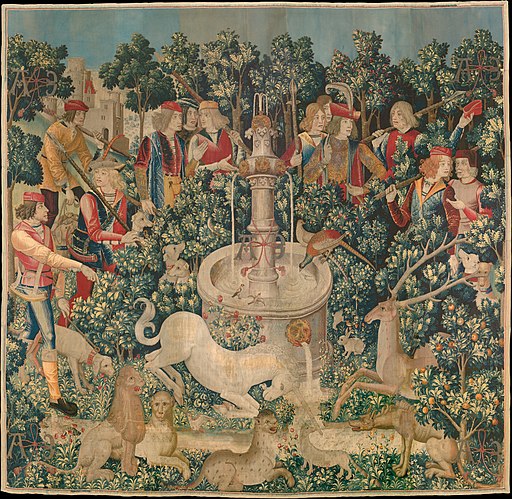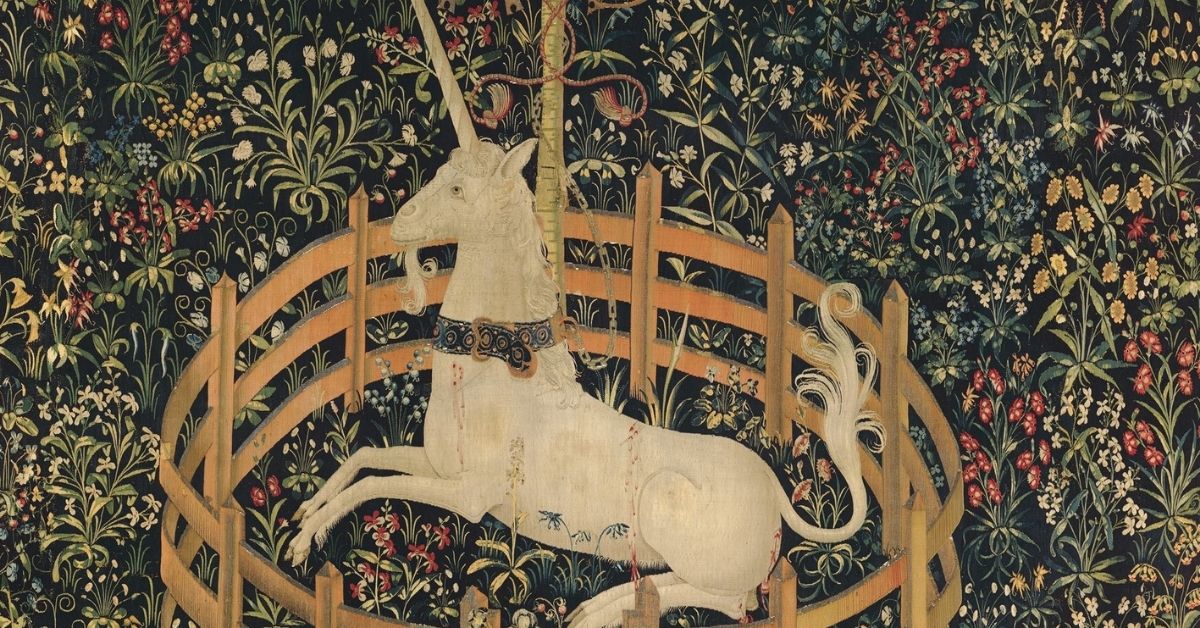Unicorns in the Middle Ages
Hello, dear unicorn lovers. Today, I´m going to talk about unicorns in the Middle Ages.
Imagine a world with knights in their shiny armors, mighty castles, fierce dragons, and graceful maidens. The next thing you’ll probably think of is a noble unicorn lured by a young maiden. Unicorns are an essential part of medieval mythology.
What Was the Medieval Unicorn Like?
In the Middle Ages, the unicorn was described as a wild animal living in a forest. It didn’t have the horse-like appearance of the modern-day unicorn. The medieval unicorn looked more like a one-horned goat than a horse. It often had a goat’s beard as well.
To many of us, the medieval unicorn may not seem quite as cute as the graceful single-horned horse we are used to.
What Did the Medieval Unicorn Symbolize?
Above anything else, the medieval unicorn had a religious meaning. The unicorn myth of the Middle Ages was influenced by the unicorns mentioned in the Bible and writers of Ancient Greece.
Physiologus, a Christian text written in Greece, was the foundation of the famous medieval unicorn myth. The wild unicorn only allows itself to be captured by a virgin; this myth is adopted from Physiologus.
When the maiden has captured the unicorn, hunters take the unicorn to the King. This myth has been interpreted to symbolize the incarnation of Christ. The maiden is Virgin Mary, the unicorn is Christ. When the hunters take the unicorn, this is the crucifixion.
Then, the unicorn (Christ) is taken to the King, which symbolizes the resurrection; the King is the God and the unicorn (Christ) is now incarnated.
This allegory repeats itself over and over again in Medieval art, which is what we’re going to talk about next.
The Unicorn Tapestries
The Unicorn Tapestries, also known as the Hunt of the Unicorn, is a series of seven tapestries from the late Middle Ages. As the name suggests, these tapestries represent the hunt of a unicorn. The tapestries were made in France, and are now held in the Cloisters museum in New York.

Image credit: The Cloisters, Public domain, via Wikimedia Commons
In the tapestries, the unicorn is attacked by hunters. Then, a virgin captures the unicorn, and it is killed and taken to the King in the castle. In the last tapestry, the Unicorn in Captivity, the unicorn is in captivity and no longer dead. You can see this tapestry in the featured image of this post.
Isn’t it cruel to kill a unicorn, though? You may certainly say it is. Tricking a poor unicorn with a virgin, and then capturing and killing it may not seem exactly ethical, but this is ancient lore of the unicorn. And as I mentioned before, in this myth the unicorn was interpreted as the symbol of Christ, so it was actually not about killing a unicorn after all.
The myth also had a pagan meaning; according to the pagan interpretation, the unicorn and the virgin actually represent lovers. The virgin tames the unicorn (a man) and captures him by love.
Unicorns in the Middle Ages – Mythical Symbols
The medieval unicorn was usually portrayed as a goat-like, bearded one-horned creature. It was different from the single-horned horse-like animal we are used to thinking of like the unicorn today.
The unicorn in the Middle Ages is defined by the myth of the single-horned, forest-dwelling animal that can only be tamed by a virgin.
Tamed by the virgin and killed by the hunters, the unicorn was often seen as an allegory of Christ. This ancient myth is also the topic of the famous medieval Unicorn Tapestries.
There is also a pagan interpretation of the medieval unicorn myth; the virgin and the unicorn symbolize lovers.
In the Middle Ages, unicorns were mythical symbols that inspired people’s imagination. This is what unicorns have been for thousands of years. Even today, we still find new meanings to the ancient unicorn myth.
What do you think of the medieval unicorn myth? What do you think it represents? Please share your thoughts in the comment section below!
Share this on:
